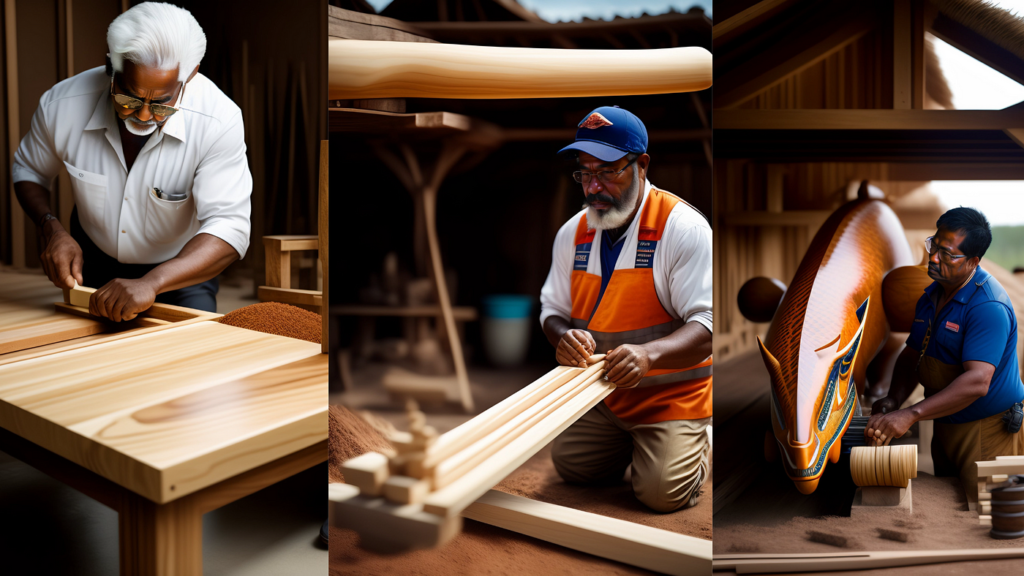The Timeless Craft: Tracing the Historical Evolution of Carpentry Techniques
by siteadmin

Carpentry stands as a testament to the ingenuity and craftsmanship of generations past, shaping the world around us with its enduring structures and timeless techniques. From the ancient civilizations of Mesopotamia to the modern construction sites of today, carpenters have played a pivotal role in building societies and shaping architectural landscapes. In this blog post, we’ll embark on a journey through time to explore the historical evolution of carpentry techniques, tracing the development of this venerable craft from its humble beginnings to its modern-day innovations.
Ancient Origins:
The roots of carpentry can be traced back thousands of years to the dawn of civilization. In ancient Mesopotamia, Egypt, and China, carpenters wielded primitive tools such as stone axes, chisels, and adzes to fashion timber into structures ranging from simple shelters to monumental temples and pyramids. With meticulous skill and craftsmanship, these early carpenters laid the foundation for the architectural wonders that would stand as testaments to their ingenuity for millennia to come.
Medieval Mastery:
During the Middle Ages, carpentry evolved into a highly respected and specialized trade, with guilds and apprenticeships formalizing the training and education of carpenters. Medieval carpenters honed their skills in timber framing, joinery, and truss construction, mastering techniques that would become hallmarks of Gothic architecture. From the soaring cathedrals of Europe to the timber-framed houses of medieval towns, carpenters left their mark on the built environment, creating structures that continue to inspire awe and admiration to this day.
Renaissance Revival:
The Renaissance period ushered in a revival of classical architecture and a renewed interest in craftsmanship and design. Carpenters of the Renaissance embraced principles of proportion, symmetry, and harmony, applying mathematical and geometric principles to their work. Techniques such as woodturning, marquetry, and intarsia flourished, as carpenters experimented with new materials and decorative elements to create ornate furniture, paneling, and moldings for palaces, mansions, and churches.
Industrial Revolution:
The Industrial Revolution brought about significant changes in carpentry techniques, as mechanization and mass production revolutionized the construction industry. Steam-powered sawmills, planers, and lathes replaced traditional hand tools, increasing efficiency and output. Carpenters adapted to new technologies and methods, incorporating machine-cut components and standardized building materials into their work. While the industrialization of carpentry brought about greater productivity and affordability, it also led to a loss of craftsmanship and artisanal skills in some quarters.
Modern Innovations:
In the 20th and 21st centuries, carpentry has continued to evolve with advancements in technology, materials, and building practices. Power tools such as circular saws, routers, and nail guns have become indispensable to modern carpenters, streamlining construction processes and improving productivity. Additionally, sustainable practices such as green building, recycled materials, and energy-efficient construction techniques have gained prominence, prompting carpenters to adopt eco-friendly methods and materials in their work.
The historical evolution of carpentry techniques is a testament to the resilience, adaptability, and creativity of craftsmen throughout the ages. From ancient civilizations to modern times, carpenters have utilized a diverse array of tools, materials, and methods to build structures that endure the test of time. As technology continues to advance and architectural trends evolve, carpenters will continue to innovate and refine their craft, preserving the legacy of this timeless trade for future generations to admire and appreciate.
Carpentry stands as a testament to the ingenuity and craftsmanship of generations past, shaping the world around us with its enduring structures and timeless techniques. From the ancient civilizations of Mesopotamia to the modern construction sites of today, carpenters have played a pivotal role in building societies and shaping architectural landscapes. In this blog post,…
Recent Posts
- Carpenters’ Corner: Exploring Essential Woodworking Tools and Their Uses
- Pergolas: Enhancing Outdoor Spaces and Reducing Stress
- Choosing the Right Installation Method for Flooring: A Comprehensive Guide
- Understanding Color Psychology in Flooring: Transform Your Space with the Right Hues
- Elevate Your Space: Custom Closets Embracing Design Trends and Inspirations
